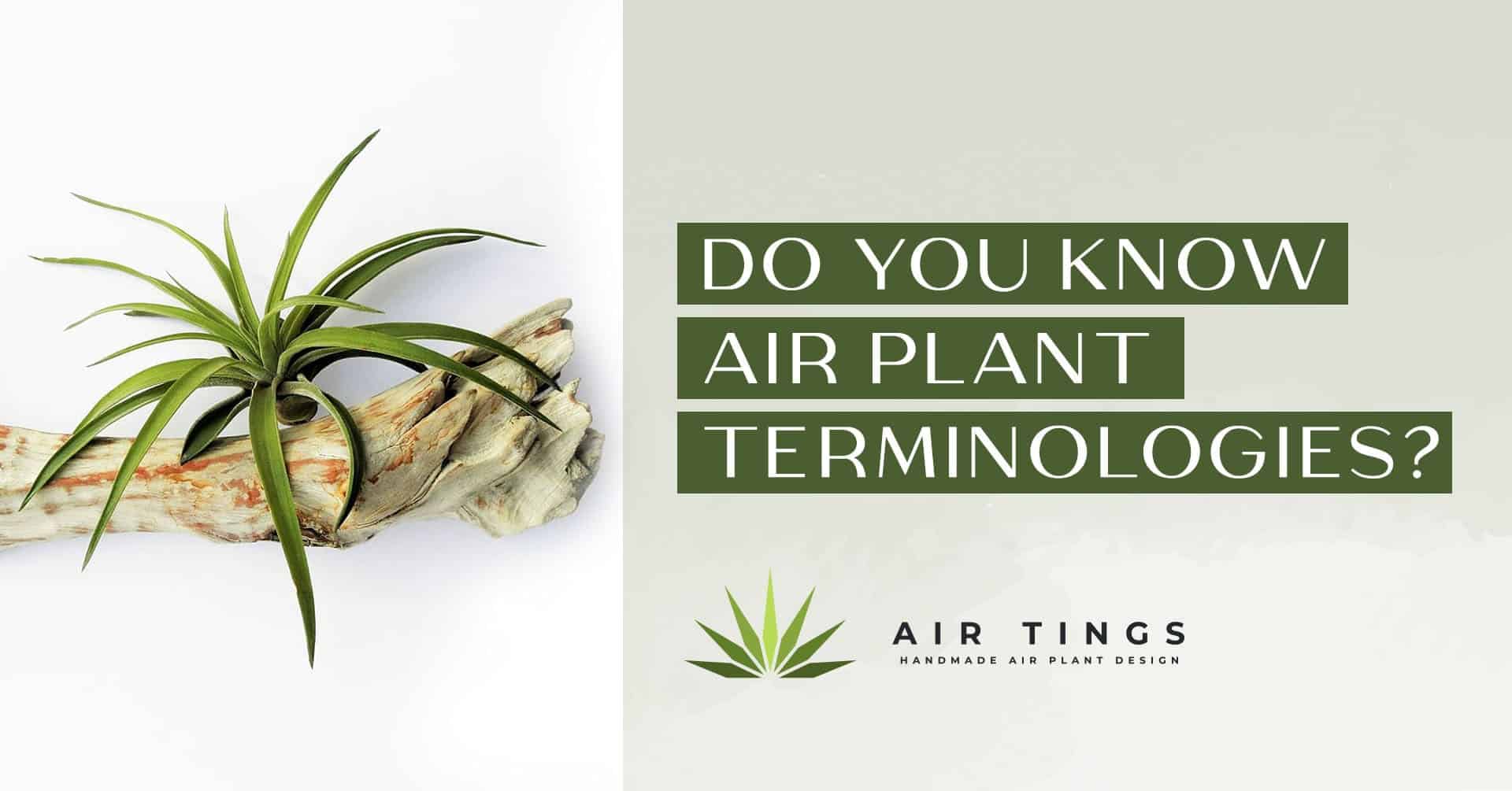If you’re a novice plant enthusiast you may be wondering what all the scientific terms surrounding air plants mean. We don’t blame you! It can feel intimidating to begin learning about tillandsia when you don’t understand the complex terminology that comes along with them. For this reason, we’ve compiled an explanation for most of the common terms used when talking about air plants!
Bromeliad
Did you know all Tillandsia are considered Bromeliads? Bromeliads are plants characterized by short stems and stiff leaves. These plants usually grow in tropical or subtropical regions. Some large bromeliads grow in the soil while others, like tillandsia, prefer to attach themselves to trees.
Caulescent
Caulescent plants are those that have a stem visible as it grows, with new leaves forming every higher up the stem as it matures. Tillandsia latifolia is a commonly known caulescent air plant as it can be found growing on a long stem. Cacticola (picture to the right) is another perfect example of a caulescent plant.
Epiphyte
An epiphyte is a plant that obtains its nutrients and moisture from the air around it. This is why air plants have their name-they are epiphytic plants because they absorb what they need to survive from the air. For the most part epiphyte plants live in tropical climates, but some are known to thrive in dryer temperatures. Some recognizable examples of epiphytes are Tillandsia, Bromeliads, Orchids, and Moss.
Inflorescence
An inflorescence is the cluster of flowers that grow from a main stem. Flowering air plants like Tillandsia xerographica produce one or several colorful blooms that can last anywhere from a few days to many months.
Lithophyte and Saxicolous
Lithophyte and Saxicolous don’t exactly roll off the tongue. But, as confusing as these interchangeable words sound, they actually have simple definitions. Lithophytes or Saxicolous plants, like orchids, ferns, and algae, are plants that grow in, on, or amongst rocks. Some air plants like Tillandsia tectorum are considered lithophytes because they have adapted to grow amongst rocks in their native climates.
Mesic
A mesic air plant is an air plant that has adapted to survive in a moderate or humid climate. These air plants typically have thinner leaves and fewer trichomes than xeric air plants, as they do not need to retain as much water to survive. Mesic air plants are often found in tropical or subtropical regions where humidity is high, and they typically require more frequent watering than xeric air plants to maintain their health.
Examples of mesic air plants include Tillandsia ionantha, Tillandsia velutina, and Tillandsia streptophylla. These air plants are known for their colorful blooms and unique shapes, and they can be grown indoors in areas with high humidity or outdoors in warmer, humid climates. While mesic air plants require more water than xeric air plants, they still should not be overwatered and should be allowed to dry out between waterings to prevent root rot.
Offsets and Pups
Offsets, or more commonly “pups”, are the plant babies that stem from a mother plant. After a mother plant blooms, pups are likely to grow out of the mother plant’s base. Sometimes multiple pups will develop so that they can be removed from their mother plant, resulting in the exciting possibility for multiple individual plants.
Tillandsia
Scientists refer to living things by their binomial nomenclature, or the two terms used to classify a plant or animal. Air plants are no exception! Tillandsia is the genus classification that describes a large number of epiphytic plants that mainly grow in tropical and subtropical regions. For example, Tillandsia bulbosa is a popular air plant with Tillandsia being the genus classification and bulbosa being the species classification.
Trichomes
Trichomes are the small hairs visible on the outer skin of air plants. These trichomes are a big part of what helps air plants survive. Not only do trichomes help air plants reflect solar radiation, but they also serve to catch nutrients that sustain the plant. Air plants are able to absorb water thanks to their trichomes.
Xeric
A xeric air plant is an air plant that has adapted to survive in a dry or arid climate. Xeric air plants typically have thicker leaves and more pronounced trichomes (small hairs on the surface of the plant that help to retain water) than non-xeric air plants. These adaptations allow xeric air plants to better retain moisture and survive in environments with less available water.
Some examples of xeric air plants include Tillandsia tectorum, Tillandsia brachycaulos, and Tillandsia capitata. These plants are typically found in areas with low humidity, such as deserts or arid regions, and can tolerate more direct sunlight than non-xeric air plants. It’s important to note that even xeric air plants still need some water to survive and should be watered regularly, albeit less frequently than other air plants.


